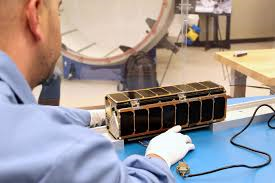
Breaking News
 Visualizing How Much Gold Is Left To Mine On Earth
Visualizing How Much Gold Is Left To Mine On Earth
 US Government Revokes 80,000 Visas
US Government Revokes 80,000 Visas
Top Tech News
 HUGE 32kWh LiFePO4 DIY Battery w/ 628Ah Cells! 90 Minute Build
HUGE 32kWh LiFePO4 DIY Battery w/ 628Ah Cells! 90 Minute Build
 What Has Bitcoin Become 17 Years After Satoshi Nakamoto Published The Whitepaper?
What Has Bitcoin Become 17 Years After Satoshi Nakamoto Published The Whitepaper?
 Japan just injected artificial blood into a human. No blood type needed. No refrigeration.
Japan just injected artificial blood into a human. No blood type needed. No refrigeration.
 The 6 Best LLM Tools To Run Models Locally
The 6 Best LLM Tools To Run Models Locally
 Testing My First Sodium-Ion Solar Battery
Testing My First Sodium-Ion Solar Battery
 A man once paralyzed from the waist down now stands on his own, not with machines or wires,...
A man once paralyzed from the waist down now stands on his own, not with machines or wires,...
 Review: Thumb-sized thermal camera turns your phone into a smart tool
Review: Thumb-sized thermal camera turns your phone into a smart tool
 Army To Bring Nuclear Microreactors To Its Bases By 2028
Army To Bring Nuclear Microreactors To Its Bases By 2028
 Nissan Says It's On Track For Solid-State Batteries That Double EV Range By 2028
Nissan Says It's On Track For Solid-State Batteries That Double EV Range By 2028
Army will use lasers to cubesats for 50 times faster communication

This is 50 times better than 2 megabit per second radio communication to cubesats that are currently used.
Optical Communications and Sensor Demonstration (OCSD) CubeSat could be improved to 2.5 gigabits per second with relatively simple upgrades to the attitude control system and a few other systems. This would open the possibility of using small satellites in applications, such as synthetic aperture radar or hyperspectral Earth imaging, that produce volumes of data far beyond the capacity of radio-frequency downlink systems. It is also possible to use these satellites as data relay nodes in low-Earth orbit. Having several small satellites has the potential to provide low-latency, high-rate communications as a service for other satellites in orbit around Earth.

 America's 'Ceausescu Moment'
America's 'Ceausescu Moment' The Risk Of AI Isn't Skynet
The Risk Of AI Isn't Skynet Carbon based computers that run on iron
Carbon based computers that run on iron

